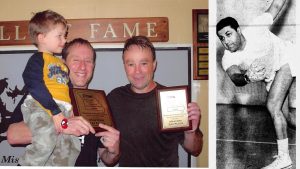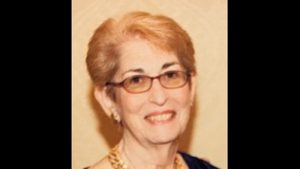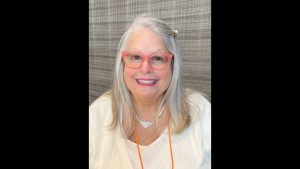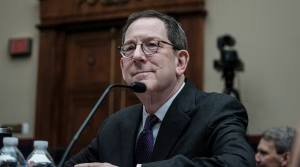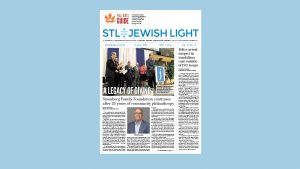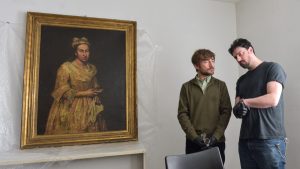A few new Passover haggadahs, and a facelift for an old favorite
Published March 30, 2011
SAN FRANCISCO – Nearing its 80th birthday, perhaps it was time the most printed Passover Haggadah in history had a major facelift.
The Maxwell House Passover Haggadah, which has had more than 50 million copies published, hits the shelves — and supermarkets — this spring featuring its first new English translation since 1934, the year it was originally printed.
ADVERTISEMENT
Banished are the awkward “thee” and “thou,” replaced by the more conversational “you.” The Eternal One no longer “deliverith” but “delivers,” and seder participants are not invited to “eat thereof” but simply to eat.
While American Jews of the early 20th century might have accepted the original, archaic language, “it makes the haggadah more clumsy for contemporary readers,” said Elie Rosenfeld, CEO of Joseph Jacobs Advertising. The firm has represented Maxwell House from the beginning and spearheaded the new translation, which took nearly a year to complete.
“We wanted to make sure everyone who uses it feels comfortable with it,” Rosenfeld said.
That meant political as well as linguistic changes. The Higher Power in this haggadah isn’t a He, Lord or King, but is referred to by the gender-neutral monikers God, the Eternal and Monarch of the Universe.
The impetus for the new translation was not to address gender issues but to retell the old tale in contemporary language. Still, using gender-neutral language for God is indicated by modern theological understanding, Rosenfeld says.
“The fact of the matter is, God doesn’t have a gender,” he said.
ADVERTISEMENT
The original Maxwell House Haggadah was created as a marketing tool to promote the company’s coffee, which was certified kosher in 1923. There had been controversy for years over whether coffee beans were legumes, and thus forbidden for Passover according to Ashkenazic norms, or whether they were in fact a berry — a fruit — and therefore permitted.
Marketing whiz Joseph Jacobs, founder of the ad agency, got Orthodox Rabbi Hersch Kohn to certify the coffee kosher for Passover. The publication 11 years later of the eponymous haggadah, still distributed free in supermarkets with the purchase of the coffee, cemented the dominance of Maxwell House and its haggadah at American seder tables ever since.
Over the years, the cover design has changed, from the original bronze through various blue-and-white versions to this newest iteration, which features a Yemenite-style silver kiddush cup.
The inside illustrations are more subtly rendered than in previous versions but have not changed significantly, with one exception: Instead of a young boy, a little girl is pictured asking the Four Questions. And not just any little girl: It’s Rosenfeld’s youngest daughter, 6-year-old Abigael.
The text is bigger to make it easier to read, and the layout is easier to navigate. But the story stays the same.
“The Jews don’t end up in Boca; they still get to the Promised Land,” Rosenfeld says.
Another old-new Passover haggadah out this year is a new edition of the famous Szyk Haggadah featuring the magnificent illustrations of Polish-Jewish artist Arthur Szyk. Set for April publication, it has a newly commissioned English text written by Rabbi Byron Sherwin with Irvin Ungar.
A refugee from Nazi Europe, Syzk embedded Eastern European Chasidic imagery in his intricate and highly emotional rendition of the Exodus narrative, creating the original version of his hagaddah in the mid-1930s. Jewish survival, which Szyk viewed as the pressing need of his age, also is the theme of his haggadah: The illustration on page 26, for example, depicts empires that have tried to conquer the Jews, from the Assyrians to the Inquisition to Nazi Germany, with the two tablets of the Law astride them all, signifying the perseverance, and ultimate triumph, of the Jewish people.
“Szyk was an activist artist,” said Ungar, a former pulpit rabbi and San Francisco Bay Area resident who is curator of the Arthur Szyk Society. “He believed the Jews of Europe needed to be rescued immediately, and he was going to do whatever he could to motivate the world community to take action.”
“A Passover Haggadah: Go Forth and Learn,” by Rabbi David Silber with Rachel Furst, is being put out by the Jewish Publication Society.
If the Szyk Haggadah is gorgeous, this new work by Silber and Furst is thought provoking, delivering new insights into the seder themes as well as first-rate commentaries on the liturgy.
Silber is an Orthodox Torah scholar and educator of wide renown, the founder and dean of the Drisha Institute for Jewish Education on Manhattan’s Upper West Side. He has been teaching these lessons for years, and here he puts them down on the page in a manner at once scholarly and accessible.
Furst teaches at Matan, a women’s institute for Torah studies in Israel, and is pursuing a doctorate in medieval Jewish history at the Hebrew University in Jerusalem. This is a seder to study and discuss, but also to use — with the right crowd.
Speaking of the right crowd, kids are the target audience for “Passover Haggadah in Another Dimension” by Michael Medina, with artwork (sculptures and paintings) by Emi Sfard and photograph by Eli Neeman.
Published by Kippod3D, this haggadah boasts 3-D illustrations and comes with a pair of 3-D glasses that make the characters seemingly leap from the pages. Whoa, are those soldiers really drowning in the Red Sea?
There’s an English text, some Hebrew and transliterations of the main attractions — the plagues, the blessings, the favorite songs. But this is really all about the images, which might make some adults too queasy to tackle the gefilte fish. It’s a gimmick, but a fun one.
Proceeds will be donated to the children of Hayim Association, which raises money for pediatric cancer research in Israel.





